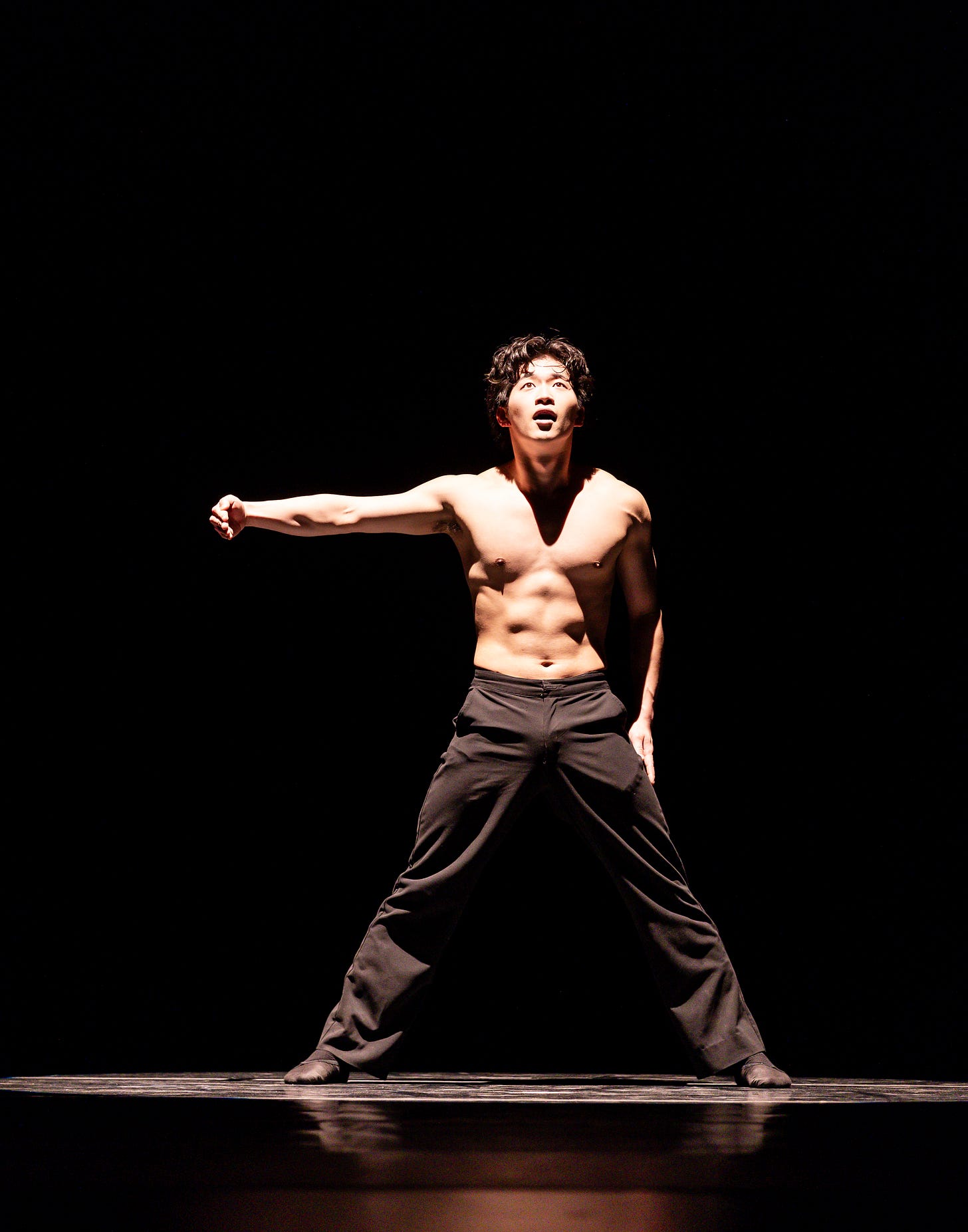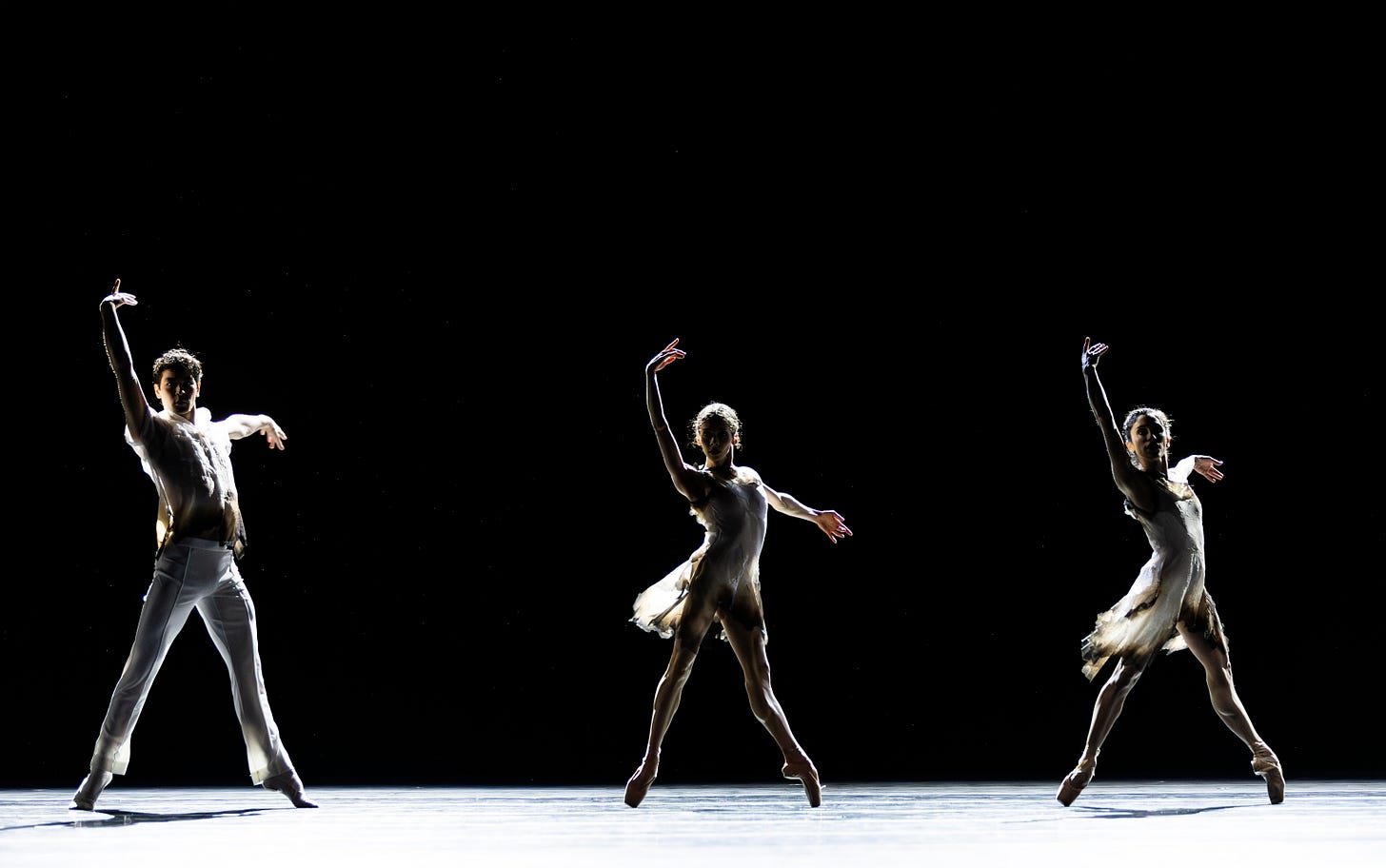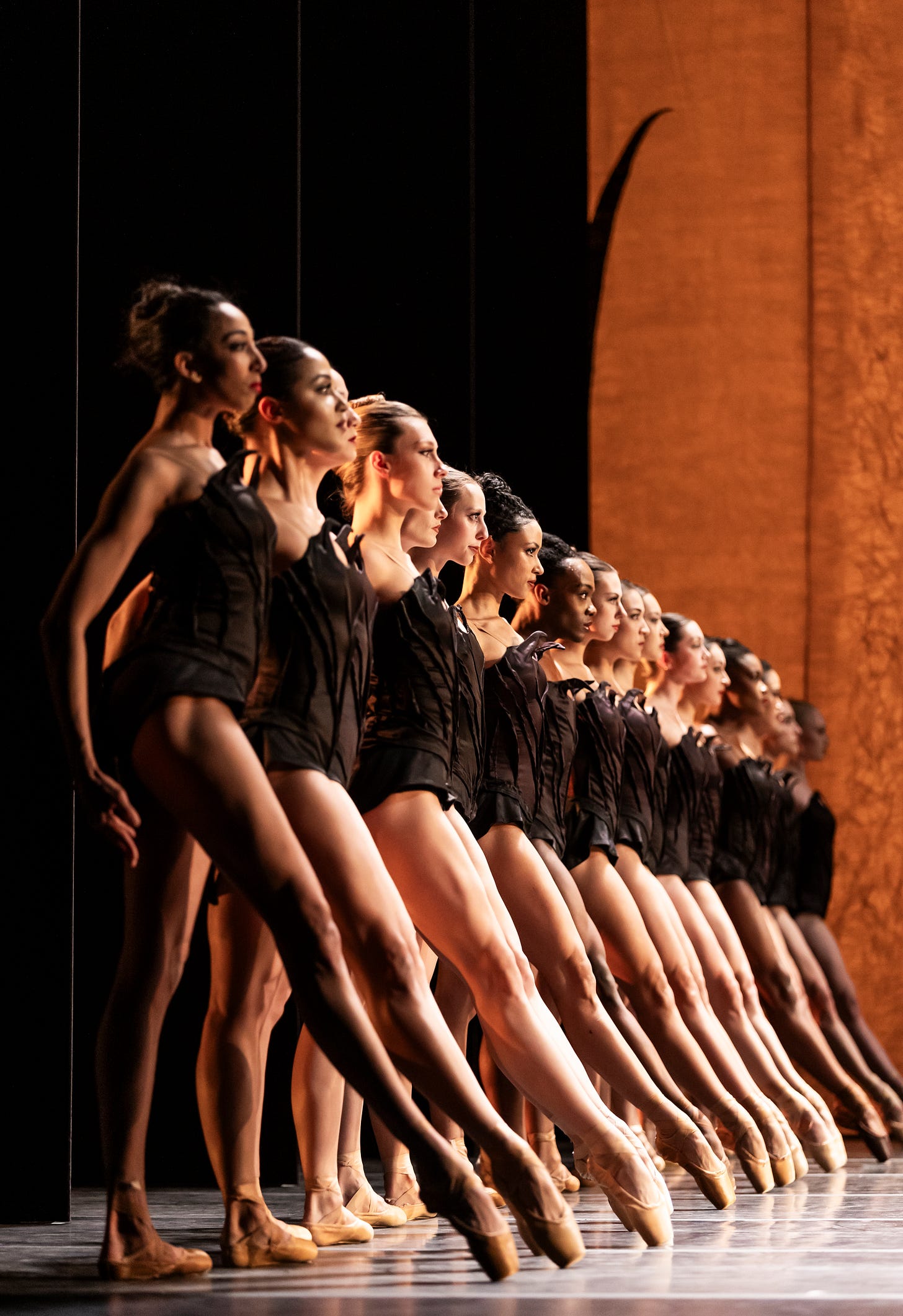
When I was in third grade my music teacher, Miss McNelly, often used a metal tuning fork to try to get our class to sing the same note in unison. She’d tap the fork with a metal stick, and if she did it just right, that note would ring out. Whether we reproduced it accurately was a different question, but we tried enthusiastically.
That resonance comes to mind when I think about what elevates an artwork to something special. I’ve seen performances that transcend beauty or cultural commentary. They’re works unlike others you’ve experienced, and once I see one, I can’t put it out of my mind. They don’t necessarily share traits with one another, but you recognize both traits they share, and the individual ways they shine.
I had that experience this past Friday, the opening night of Pacific Northwest Ballet’s March program, Emergence, a mixed bill of four works that runs the gamut from PNB soloist Price Suddarth’s Dawn Patrol, a brand-new ballet that sets out to explore what it means to be a hero, to Jerome Robbins’ 72-year old Afternoon of a Faun, a revisit of Vaslav Nijinksky’s 1912 dance of the same name. For added measure, PNB has programmed the irreverent solo Mopey on the bill, and topped everything off with the return of Crystal Pite’s Emergence, a foray into the social structure of the world of bees, originally created in 2009 for the National Ballet of Canada. It had its PNB premiere in 2013, where it blew the minds of both dancers and audience members, and helped introduce this genius of a dancemaker to Seattle audiences. Emergence is back at McCaw Hall this month for the first time in seven years and I couldn’t be more thrilled.
These four works do differ greatly in form and content, but each contained a kernel of the kind of resonance I look for at a live performance, from Mopey’s tongue-in-cheek portrait of a young man pushing his boundaries, whether through his attempt to show the audience his rebellion, or poke at the boundaries of what movement and music we expect at the ballet. On opening night Soloist Kuu Sakuragi showed us his impatience with standards, but he also offered a new portrayal of this surly young male character. It was a delightful contrast with Lucien Postlewaite and Clara Ruf Maldonado’s quiet mastery of Afternoon of a Faun.
Postlewaite, now PNB’s most senior dancer, radiates complete control over Robbins’ material. He is a dancer resting in his rehearsal room when his solitary peace is disturbed by Maldanado.
Their brief encounter is lovely, and a little wistful, with Debussy’s famous music like a delicate net that holds the dancers delicately but firmly. My son pointed out that both Postlewaite and Maldanado’s strength came from the deliberate way they moved, the careful placement of hands and feet and the intimate world they created for the audience. I didn’t expect such a small dance to take up so much space in my mind.
Suddarth’s Dawn Patrol, the program’s opening piece, felt equally ethereal, an episodic demonstration of the PNB dancers’ skill, particularly Noah Martzall and Christopher D’Ariano. They’re capturing both the bravura of WWII fighter pilots heading off on perilous missions, and the joy those pilots must have felt taking off in their airplanes at dawn. This is a big work for Suddarth, one that he says felt more collaborative than dances he’s made in the past. The costumes by Mark Zappone, Reed Nakamura’s lighting and composer Alfonso Peduto’s score are intrinsic to the ballet, as is Chrisoula Kapelonis’ set.
Pite’s Emergence dispelled any sense of ephemerality. She writes in the program that she set out to explore structure and hierarchy in this dance and her evocation of bee sounds and movements still is gobsmacking, even after seeing this work at least five times before this year.

To watch the dancers pace across the stage, raising their knees and feet to pick their way carefully forward, elbows crooked behind them, is to marvel at how humans can begin to erase traces of their species and morph toward insecthood. The entire cast of more than 35 is excellent, but it was stunning to watch Dylan Wald with Elle Macy, and to see Price Suddarth return to Pite’s world seven years after his previous performance in this piece. And the opening couple, Leta Biascussi’s hatching bee with Miles Pertl set both the almost menacing tone of the ballet and created the foundation for Pite’s apian universe.
Emergence, both the ballet and this March program, offer contemporary material that will both challenge and soothe your world. All four ballets contain moments of beauty, or social commentary, or simply shine light on the various paths ahead of us. Don’t miss it! If you don’t know Crystal Pite’s work, now is a great time. You’ll get an opportunity to watch some of this city’s most amazing artists and to experience the work of a woman who truly tells resonant stories. I’ve called her a fucking genius and I stand by that opinion. Emergence runs Thursday March 20-Sunday March 23 at Marion Oliver McCaw Hall.








